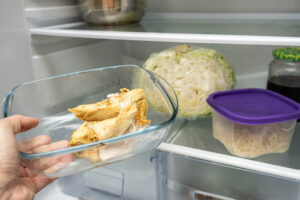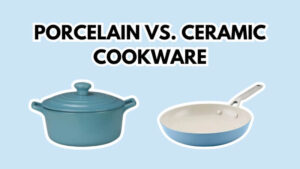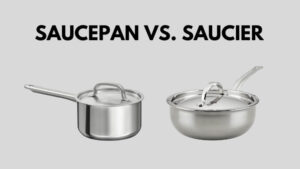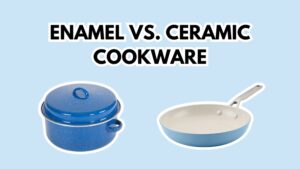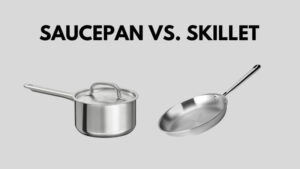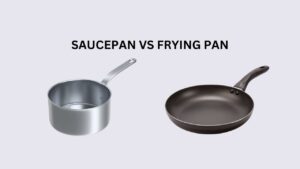When shopping for nonstick cookware, you’ve likely come across products labeled as PFAS-free or PFOA and PTFE-free. But what do these labels actually mean?
Home goods pots and pans PFAS Free are designed without ‘forever chemicals’ a term used for substances like PFOA and PTFE, which persist in the environment and may pose health concerns.
If you’re looking for a safer, durable, and high-performing cookware alternative, this guide will help you understand PFAS-free cookware, its benefits, and how to choose the best options for your kitchen.
What is PFAS and Why Should You Care?
PFAS (per- and polyfluoroalkyl substances) are a group of chemicals used in various products, including nonstick cookware coatings like Teflon. Two common types of PFAS found in cookware are PFOA and PTFE.
While PFOA was commonly used in the past to make nonstick surfaces, it has been phased out due to health and environmental concerns. PTFE, which is still used in many nonstick pans today, is generally safe at normal cooking temperatures. However, at very high heat, like when the pan is overheated, PTFE can break down and release fumes that might cause discomfort or flu-like symptoms.
For a healthier cooking experience, many people choose PFAS-free cookware to avoid these potential risks.

According to Google Trends, interest in PFAS-related searches has increased significantly since 2018, coinciding with rising discussions on non-toxic cookware and environmental health.
Why Choose PFAS-Free Pots and Pans?
Minimize Exposure to Synthetic Chemicals
Many consumers choose to avoid synthetic coatings to reduce exposure to unwanted chemicals. Instead, they opt for safer, more durable materials like stainless steel, cast iron, and ceramic, which are natural materials that offer nonstick properties without the need for chemical coatings.
Durable and High-Performing
Many cookware options naturally offer nonstick properties when used correctly, making cooking easier and more efficient without the worry of scratched or damaged coatings.
Popular PFAS-free alternatives include:
- Stainless steel: Heats evenly and develops a natural nonstick surface when preheated properly.
- Cast iron: Retains heat well and becomes nonstick over time with seasoning.
- Enameled cast iron: Non-reactive and easy to clean.
- Ceramic: Naturally nonstick without synthetic coatings.
- Glass bakeware: Ideal for baking, resistant to stains and scratches.
Types of Cooking Methods You Should Choose
Sautéing and Stir-Frying
As these cooking methods require a high temperature, it’s best to choose cookware without any nonstick coating. This leaves you with material that becomes nonstick if seasoned correctly or if the temperature is high enough, like stainless steel and cast iron.
Both these materials are durable and easy to maintain. However, stainless steel can be tricky to master, as it needs to be hot enough to become nonstick. Cast iron is easier to use, but you need to season it first.
If seasoning the pan sounds like too much trouble, enameled cast iron is an ideal option. However, this material does have a nonstick finish. And although this layer is tougher than a ceramic coating, it can still scratch and chip if you’re not careful.
Boiling
Stainless steel heats quickly, making it an excellent choice for boiling water. Enameled cast iron and ceramic are also suitable for boiling and stewing.
Baking
Heatproof glass cookware is an excellent choice for baking, as it helps create a crispy bottom on pies while being oven-safe and easy to clean. Additionally, its sleek design allows for serving directly from the dish, making it both practical and stylish.

Top 5 PFAS-Free Cookware Brands to Consider
When shopping for safe, non-toxic cookware, consider these trusted brands:
| Brand | Best for | Material |
|---|---|---|
| GreenPan | Nonstick frying pans | Ceramic-coated aluminum |
| Caraway | Stylish, modern cookware | Ceramic-coated steel |
| Xtrema | 100% non-toxic, eco-friendly | Pure ceramic |
| Made In | Professional-grade stainless steel | Stainless steel |
| Our Place | Versatile, aesthetic cookware | Enameled cast iron & ceramic |
Pro Tip: Look for cookware labeled “PFAS-Free” rather than just “PFOA-Free” to ensure it’s free from all synthetic nonstick chemicals.
Common Myths about PFAS-Free Cookware
Myth #1: PFAS-Free cookware isn’t truly nonstick
Truth: Materials like stainless steel and cast iron become naturally nonstick when heated correctly.
Myth #2: All PTFE-Free cookware is safe
Truth: Some brands market cookware as PFOA-free but still use PTFE. Always check labels for 100% PFAS-free certification.
Myth #3: PFAS-Free cookware is hard to maintain
Truth: Proper care (seasoning cast iron, using wooden utensils, and avoiding harsh scrubbers) extends the life of PFAS-free cookware.
Final Thoughts
If you’re looking for an alternative to traditional nonstick cookware, PFAS-free options like ceramic, cast iron, aluminum and stainless steel cookware offer safe and durable solutions. These materials can provide excellent cooking performance without the need for synthetic coatings.
By avoiding kitchen equipment with toxic chemicals, you reduce the risks for yourself and your family. And since there are many safer options out there, you don’t have to worry that you won’t find a cookware that suits your needs and cooking style.



